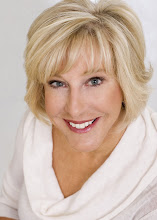Last
night was one of the most memorable evenings of my life—the launch party of my
new book, HUM: Using Connective Change to Lead Your Organization to Greater
Purpose and Harmony. Thanks to the many
friends and colleagues who joined me at the Center’s new offices for cocktails
and a lively conversation to explore some questions examined in the book:
·
What
are the traits of the best (connective) and worst (disjunctive) organizations
you’ve experienced?
·
If
everyone can recognize and wants a healthy, connective organization, why aren’t
more organizations healthy, fun, and productive?
·
What
are the keys to creating and sustaining a healthy, connective organization?
People
talked about how trust, respect, and clear purpose are among the traits
everyone’s experienced in a healthy, connective group. Some of them talked about how a toxic person
can contaminate an entire team if not dealt with. There was a good discussion of whether
private and public organizations have different “default” cultures, and many
believed that it depends on their leaders and what they model and expect of
others. Someone asked about “charismatic
leaders” who are disjunctive with their own people while shining to the outside
world—a topic that stirred up a lot of ideas about how to work with and around them.
Participants
in last night’s soiree wrote down questions they want me to explore in future
blogs. Some promised to email additional
comments and questions, which I will be sharing in my blog in coming
weeks. You can add to the conversation
about healthy and unhealthy organizations by emailing me your stories,
questions, or comments.
I am
so grateful to the friends who have become clients over the years, trusting me
with their organizations’ health. And
I’m grateful to the clients who, over the years, have become close personal
friends and supporters. I’m
even grateful to those rare “difficult” clients—perhaps they taught me the
most. So many contributed to the
experiences I’ve had and lessons I’ve learned that resulted in this book. A big
thanks to all of you—for trusting me as your partner in connective change, and for having the courage to make the tough decisions often required to create
an organization that works with greater purpose and harmony.



